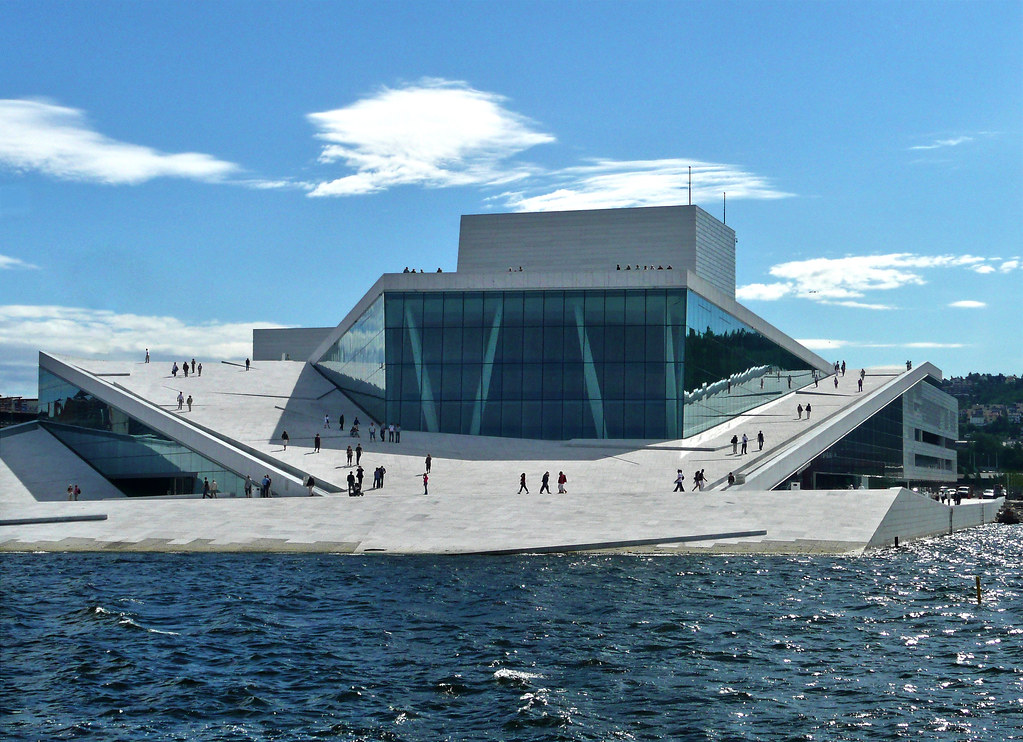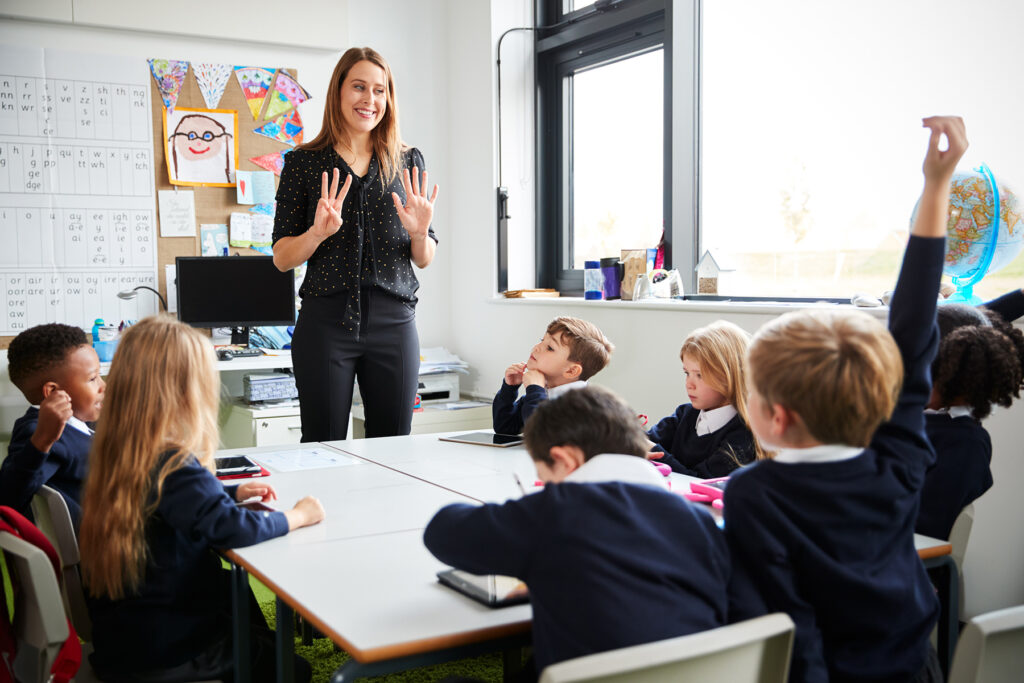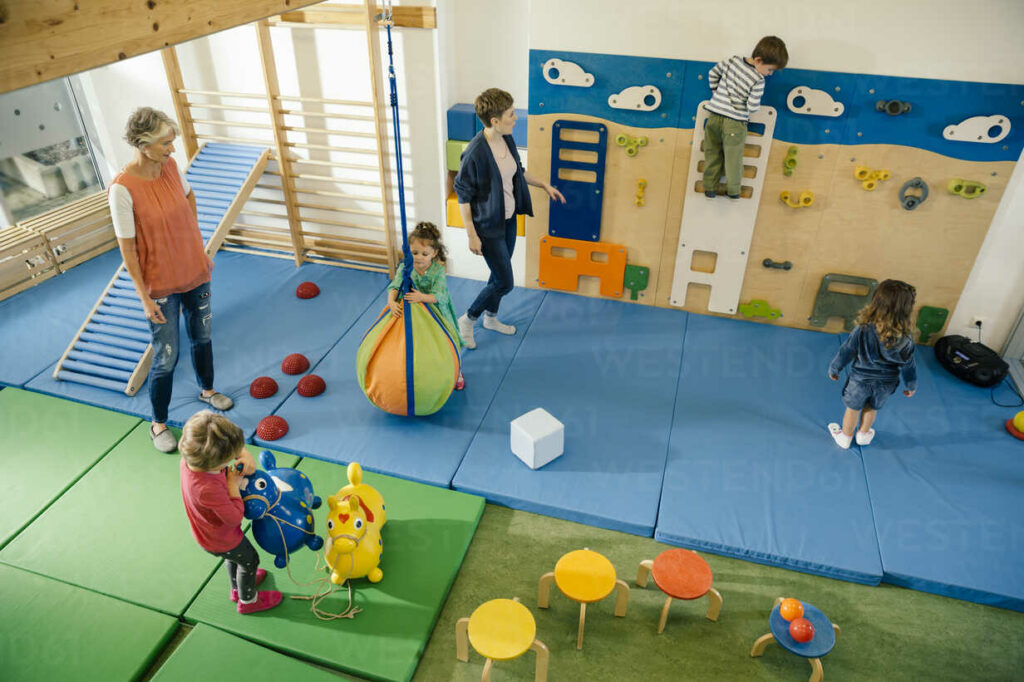Best Private Schools in Oslo for Expats – that will be the topic of today’s article.
Before introducing this article, if you are interested in our core services which are expat financial, insurance, and mortgages, you can contact me here.
The best time to consider your financial situation is when you are moving to a new country.
Introduction
This clean, safe city is embraced by the love of landscape and access to the Oslo fjord, making it one of the best places to raise a family. In the summer, the hills and island are a popular destination for people of all ages, while in the winter, it transforms into a skier’s paradise.
The country’s academic record is among the best in Europe, and most people believed it was because of the liberal system, which increased social life equality and reduced anxiety. However, this is due to children’s early socialization.

Schooling education begins at six when you enter the barneskole level, also known as elementary school. By the age of thirteen, The school will move you to ungdomsskole, or lower secondary school, where you will progress to the next level, videregaende Skole, or senior secondary school, after three years.
Oslo’s schools adhere to the country’s national curriculum, which includes math, English, science, and the environment, religion, and music, among other subjects. The secondary school focuses on vocational education, and students choose subjects that align with their future goals.
Norway’s educational standards are well recognized around the world. Still, there is a problem if you are an expat or have an expat child because the language used in teaching is Norwegian unless it is a private or international school, so let’s get to the point of this article “the best private schools in Oslo.”
Best University or School in Oslo

1. BI Norwegian Business School/Handelshyskolen BI
Looking for a new beginning to keep your mind fresh with a unique perspective and sense of business, balance, and mentorship?
One of the most significant benefits of attending a Norwegian business school is the opportunity to be a part of a network of academic and business professionals who work together to create a more sustainable future. Eighty percent of bachelor’s students and ninety percent of master’s students find work within 24 weeks of graduation.
The majority of the programs are taught in English, and 20% of the students are international.
Facilities
They have four campuses, which are;
- Campus Oslo: More than 13,000 people live on this campus, which offers all courses offered by the university. with lecture rooms consisting of 20 auditoriums and 28 classrooms all equipped with cutting-edge technology, over 2,500 study areas, group rooms, an open door policy where you can talk to a professor at any time, and food and drinks for all students
- Campus Bergen: the largest campus outside of Oslo, is located in a vibrant and engaging environment for students, and it is new and modern.
- Campus Trondheim: This campus has the best student environment, with over 32,000 students. The campus aspires to be one of the best in the Nordic region in terms of student environment. With 1,892 students available, the average age of students on this campus is 23.9. Its lecture halls include four auditoriums that can seat 150-300 people and seven classrooms that can seat 80 people. There are also reading areas available, which are always open 24 hours a day, seven days a week, as long as scheduled exams or lectures, group rooms, and a cafeteria.
- Campus Stavanger: 799 students live on this campus for the duration of their studies. Everything on the schedule and in the courses is in Norwegian. We have nine large and modern classrooms and auditoriums, as well as a workspace and a cafeteria. This campus has a population of 1272 people and an average age of 27.5.
2. Høyskolen Kristiania
Hyskolen Kristiania, also known as kristiania University College, is a non-governmental higher education institution in Norway founded in 1914.
One of the campuses is the main draw in the Norwegian capital. Kristiania University College is one of Norway’s most prestigious universities, ranking among the top five in the country. Despite being one of Norway’s youngest educational institutions, kristiania University College is ranked among the best in the country.
Kristiania University College offers over 200 courses that can be used for your bachelor’s, master’s, and research degrees, which are available in English. Campuses are located in Bergen, Oslo, and online.
The school is very small in terms of facilities and population because it believes in the interaction between teachers and students. Because the school merged with Westerdale Oslo ACT, which provides an exciting education in 2017, they now have 10,000 students and 448 teachers.
3. MF Norwegian School of Theology
Det Teologiske Menighetsfakultet (MF Norwegian School of Theology) was founded in 1907 as a private non-profit higher education institution in the heart of Oslo. The Ministry of Education has officially recognized the university.
Det Teologiske Menighetsfakultet (MF) is a small university with a student body of 500 to 1,000. It is a mixed-gender Norwegian higher education institution that is officially affiliated with Christian Lutheranism.
Det Teologiske Menighetsfakultet (MF) provides courses and programs that allow you to obtain formally accredited higher education degrees, such as undergraduate degrees (i.e., certificates, diplomas, associate degrees, or foundations), bachelor’s, master’s, and doctorate degrees in a variety of fields of study.
This 113-year-old university has an optional admissions policy based on student’s previous academic records and grades. The acceptance rate ranges between 70% and 80%, making this Norwegian higher education institution somewhat selective.
International students are welcome to apply. MF also provides a wide range of academic and non-academic facilities and services to students, such as libraries, study abroad and exchange programs, and administrative services.
4. VID Vitenskapelige Høgskole
VID University is a well-known and private university institution. Vid is Norway’s third-largest university, with approximately 525 employees and 5,290 students.
Vid University focuses on education and research in social and medical sciences, educational science, management, diaconia, and theology. The school offers approximately 50 programs at the Bachelor, Master, and Ph.D. levels, and our goal is to grow as a national organization through regional collaboration. The school has locations in Oslo, Bergen, Stavanger, Sandnes, and Troms.
VID is divided into three faculties, four strategic research centers, and two departments for shared resources.
The Faculties
Faculty of Health Studies
Faculty of Social Studies
Faculty of Theology, Diaconia and Leadership Studies
The Strategic Centres of Research
Centre of Diaconia and Professional Practice
Centre of Mission and Global Studies
Centre of Intercultural Communication
Centre of Learning in Professional Education and Practice
The Shared resources
Department of Academic Support
Department of Administrative Support
Top Private Schools in Oslo

Now let’s talk about the high school side of Oslo. here are some of the best private schools in Oslo
1. l
Karlsrude School Is a Nordstrand district 110 school with approximately 550 students and 106 employees. In Karlsrude, your job is defined by ambition and the desire to maximize the potential of every student.
They set up mixed-age projects many times during the school year to ensure the connection between different age groups. The intermediate project week and junior high school subject day are held during the fifth week of junior high school.
Teachers and students can collaborate at all levels beginning in elementary school. Students are immersed in these interdisciplinary projects, have time to apply new knowledge, and know each other well.
The school has implemented a systematic method for developing students’ reading skills, and teachers receive field training at the school. They must achieve good results, and then all teachers must follow suit.
Their goal is for all Karlsrude students to read different texts and use good reading strategies to learn.
Karlsrude School was established in 1963. The school was closed in 1991 due to a decrease in the area’s population. Karlsrude School reopened in 1997 for grades 1 through 4. Karlsrud had 1 to 10 schools as of the autumn of 2003.
The board completely renovated the entire school at the start of the school’s existence in 2005. The school’s special department serves children with autism spectrum disorder
2.The Kristeign Gymnasium (KG)
The school, founded in 1913, provides a three-year university preparation research program in science, languages, and social sciences and introductory classes in business and law. Furthermore, classes are required by Norwegian law, and classes 8, 9, and 10 (secondary school) are provided.
In national and standardized tests, students from all Norwegian private schools perform best. Religion and biblical studies are “required” courses for all students. The school has a staff, and daily Bible research conducted by students and teachers broadcast daily news and information through the news and daily report.
Every student and graduate receives a copy of the twin publication “Kgnytt.” Det Norske Misjonssselskap, Normisjon, and Norsk Luthersk Misjosamand are all owned by the school.
Because of the increased enrollment, the school built the third building and added a state-of-the-art lecture hall. The four facilities are located in the center of the city of Oslo. There are three main buildings around Homan Bocken.
3.The Tokerud
The Tokerud school is situated on the outskirts of the Stovner field, in a picturesque setting. Tokerud is a middle school with 400 students and 55 employees who work hard to see each student and provide a space for individual follow-up.
Joy, knowledge, and affection characterize the Tokerud school. We place a premium on open communication with students and their parents. The school has The learning environment for printing is critical to one’s happiness and career advancement. In 2018, Tokrude School joined the “Safe and Warm High School” project to create a safe learning environment, reduce absenteeism, and encourage students to be equally motivated throughout the high school stage.
On the last school day before summer vacation and Christmas, we organize school performances to perform artistic elements in front of the school. In addition, the school takes advantage of cultural backpack discounts.
The school’s primary goal is to spread knowledge, but we also want to make people happy and care for them.
We organize school performances on the last school day before summer vacation and Christmas, and students can perform artistic elements in front of the school. The school also takes advantage of cultural backpack discounts.
Their primary focus is knowledge, but we also strive to create happiness and provide care. In 1975, the Tokerud School was founded in Tokerud, Bydel Stovner.
In Liastua, the school is located on the outskirts of the forest, with access to a slalom trail with a ski lift, artificial turf, and four tennis courts. Artist Jon Torgersen created this bronze boy statue at the school.
The school complex was restored in 2007. Mold has been reported in the school, particularly in the gymnasium and housekeeping room. As a result, the school was demolished in 2014. Since the fall of 2014, the school has been housed on the grounds of Bredtvet School while Tokrod constructs its new school building. We relocated to a new school building in 2016/17.
Kindergarten or Daycare School
Kindergarten or daycare school is not required to send your child to daycare, which is normal, but it is not free; the government subsidizes a large portion. Kindergarten is only for children aged 0 to 5.
The kindergarten’s main goal is to focus on social skills, fun learning and to help bring out the potential in natural children’s curiosity, language skills, and creativity.

Enrollment and Admissions Requirements
Some private schools have their requirements, such as your nationality, language, and religion, to be enrolled in one of these schools, but this is generally what is required.
• You must submit a completed application form.
• School records are required to be submitted.
• English proficiency (for some schools).
• Entrance exam standardized test results (if applicable).
- examples of student work/portfolio.
To prepare the child for some entrance exams, here are some of the core subjects. The common core subjects for these programs are Norwegian, Mathematics, Natural Science, English, Social Science, Geography, History, Religion and Ethics, and Physical Education
School Fees/tuition Fees
People assume that because of the high cost of living in the country, school fees in private schools in Oslo will be high, but this is not the case. Living expenses in Norway are higher than in most countries because you must pay for other school supplies such as books and teaching materials. It is estimated that you will spend around a thousand euros, or NOK 9000, on living expenses in Norway, though this may vary from person to person. This estimated fee covers board and lodging, transportation, health, dentist, health, and clothing.
Private schools are free to charge whatever they want. These can range from 86,000NOK (US$9500) for undergraduate programs to 103,000NOK (US$11,300) or more for postgraduate programs.
As of 2019, the kindergarten price cannot exceed 333 USD, which is 3,040 NOK per month. Keep in mind that this limit is subject to change on an annual basis. It does not include food costs, ranging from 22–88 USD per month when converted from 200–800 NOK.
I cannot disclose fees for elementary, middle, and high school because they vary; you will only know when your application is approved; however, we can estimate that they can range from 700 to 2500 dollars, or NOK 5750 to NOK 2400. However, the government usually subsidizes it regardless of the price, and the amount varies year to year.
Grading System
As we all know, the grading system is not the same in every country; here are middle and high school grading systems, which use this number scaling.
- 6—Outstanding competence
- 5—Very good competence
- 4—Good competence
- 3—Fairly good competence
- 2—Low level of competence
- 1—Very low level of competence/fail
While the grading system of the university is
| Letter Grade | Description |
| A | Excellent |
| B | Very Good |
| C | Good |
| D | Satisfactory |
| E | Sufficient |
| F | Fail |
Private School holidays in Oslo
School holidays in Norway vary by region; the school year begins in mid-August and ends in mid-June; the most consistent holidays are five, including Christmas, autumn, Easter, winter, and summer break. The ministry of education and research sets these dates, which is why I said constantly.
Like in Norway, Christmas break lasts from before Christmas Eve to the first week of January. In February, schools close for another week for another winter break, and the next break is Easter, followed by the last break, Summer break, which begins a few days before summer.
Here’s a table to help you get a better and more concise understanding of the holiday dates.
School Holidays in Oslo
| Date | Holidays |
| August 19 | Start of classes |
| October 26 to 30 | Autumn break |
| December 17 to January 5 | Christmas break |
| February 15 to February 19 | Winter break |
| March 26 to April 16 | Easter break |
| June 18 | Summer break |
Things to Consider When Choosing School
What’s the grapevine news?
The large expat population in Oslo will have ideas about how to approach enrolling in the available options.
What’s your period?
Because of the short notice expat received their next mission, the earlier you apply, the better your chances of getting a spot in the school you prefer, which can be a big issue due to the long waiting list of Oslo big schools.
Are there any competitors?
Each school, both public and private, may employ a different method of instruction. People are open to Montessori, Steiner, and other theorist-influenced schools.
What subject do they offer?
The Norwegian schools mostly follow the primary curriculum, but some elective subjects are offered in different schools, particularly in high school. Try to figure out where your ambitions or your child’s ambitions lie, as well as their subject strength.
What does your reward package deal with?
Investigate this option thoroughly, and learn what your options are. Your options may include reduced fees at a specific school, finding the best school for the family, or a cash allowance. The subsidizing is possible because the majority of expat employers provide financial assistance to the family.
What can you afford?
All schooling activities are free in Norway for state schools, and it covers some of the best school conditions in the world. The best school for expats is the international school, but it is too expensive, so private is the only option available because it is in the middle.
Religion
The majority of private Oslo schools and universities have a Christian foundation. The reason is due to Norway’s strict law that states that a private school is illegal unless it has a religious or pedagogical alternative.
Facts about Private schools in Oslo
- Aside from the Christmas holidays, Oslo has three other school holidays: September or early October, February, and Easter.
- The academic year is divided into two terms, beginning in August and ending in June, and Christmas or winter break, from mid-December to early January.
- The majority of private schools use either English or Norwegian as their primary language.
- In each class, the teacher-student ratio is 17 to 1, whereas, in schools with fewer than 100 teachers, the ratio is 11 to 1.
- The school day in Oslo runs from 8:15 a.m. to 1:15 p.m., with three breaks in between, making it one of the world’s shortest school days.
- The Young Person’s Right states that when a child reaches the age of 15, they have the right to continue their education into upper secondary school, which is valid until the child reaches the age of 24.
- There is an alternative school for students who have completed upper secondary school. These schools run from August to May, and while there is no grading system, exams, or curriculum, they help students achieve proficiency in a specific area. Norway’s folk high school is the name given to these institutions.
- Norway is the ninth most educated country in the world.
- There are no school teams, most sports are played in private groups, and most Norwegians participate in local town teams where they must pay fees.
- Private school students are fewer than public school students; they are primarily Christian religion-based schools governed by the Independent School Act.
- In 2005, the Norwegian government declared that all private schools must provide a “religious or pedagogical” education.
Conclusions
There are several schools to choose from in Oslo. With what we’ve stated above, you should be able to pick the right one. Try to visit one or more schools and determine whether a school fits the atmosphere, ethics, discipline, and curriculum for you or your children.


